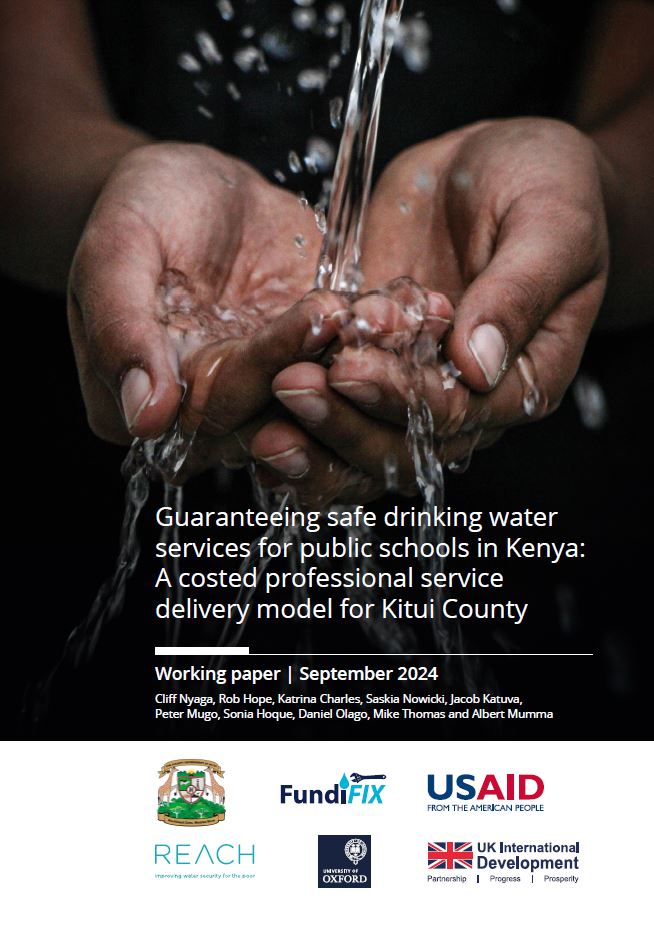Cliff Nyaga, Rob Hope, Katrina Charles, Saskia Nowicki, Jacob Katuva, Peter Mugo, Sonia Hoque, Daniel Olago, Mike Thomas, and Albert Mumma (2024)
Kenya’s ambition of middle-income status by 2030 will require progress on education, health, and equality goals. Providing universal safe drinking water services in schools is a necessary and equitable step to give every child the means to achieve their individual potential. Risks from gender inequalities, droughts, floods, and health shocks mean schools struggle to cope, girls drop out of school early, qualifications are sub-standard, and the country’s education goals are missed generation after generation.
Based on empirical studies in Kitui County, we estimate the annualized cost for guaranteeing safe and reliable daily drinking water services is KES 56 (USD 4.3) per pupil per year. In addition, the one-off capital costs to build and rehabilitate water supply systems in all public primary and secondary schools would be KES 9,425 (USD 72) per pupil. At the national scale, this translates to an initial capital investment requirement of KES 155.5 billion (USD 1.2B) to provide new access for all 17 million pupils in the 37,910 primary and 11,399 secondary schools across Kenya (as of 2020). A further annual budgetary allocation of KES 9.3 billion (USD 71.7M) is required towards professionalized operation and maintenance (O&M) of the service to guarantee safe and reliable services for every pupil, every day.
Professionalized service delivery models have been demonstrated to be effective in dramatically improving and maintaining rural water quality and reliability when combined with results-based funding. If Kitui County introduced a professional service delivery model, it is estimated that it would reduce government spending on major repairs by 60%, increase functionality from 54% to 83%, and increase water production by 67%. The economic logic is compelling. Since 2016, FundiFix has been supported by the Water Services Maintenance Trust Fund (WSMTF) designed explicitly to subsidize long-term maintenance services in rural areas. Through results-based contracts guaranteeing service levels, corporates have provided funds to progressively pay for most of the operational costs. Critically, funding is conditional on high-quality results. While this may not address the projected national costs of USD 72M, it provides lessons on how new funding can be attracted if professional services are required and programmed from the outset.
Funding alone is not a singular solution. Clarity is needed on allocating responsibilities between the National Government and County Governments on infrastructure development, and, most importantly, its long-term operation and maintenance. Further, policy reform for accountable service quality, coordination regulation, and enforcement with County governments will also be required to successfully introduce professional O&M service delivery models for schools to secure education outcomes for current and future generations. Not all County Governments will be motivated or capable of changing current practices. However, identifying a few counties to demonstrate results could guide the transition to chart the way for all.
Click here for related Briefing Note

